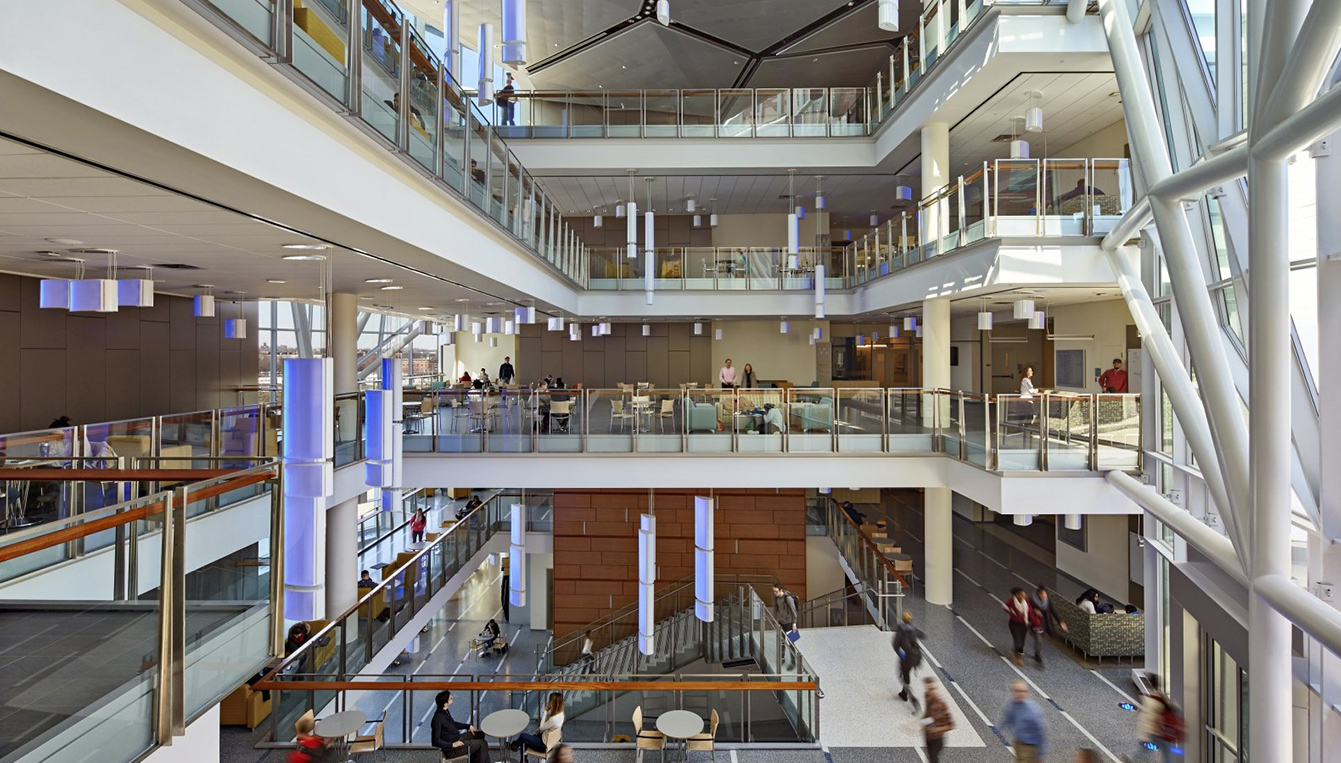Jeffrey A. Zapfe
Higher Education | Market Principal
Principal

The three most common sources of vibration in buildings are; the environment, mechanical equipment and human activity.
Environmental vibrations come in from outside the building. Common sources are nearby rail lines, streets (particularly those with significant discontinuities like potholes) and other facilities. The environmental vibrations generally define the lowest vibration levels that can be expected inside the building. In general, vibrations in the soil decrease with depth, so a basement can help to lessen the environmental vibrations at a site. Slab thickness alone does not have a significant effect on environmental vibrations, although foundation systems can take advantage of site conditions like proximity to bedrock, for example.
Structural breaks in grade-supported slabs have minimal impact on environmental vibrations. Structural breaks can help reduce high frequency vibrations (greater than 50 Hz or so), but do little to attenuate low frequency vibration. As a general rule, a slab break will help if someone drops a hammer on the floor, but will have little effect on vibrations from trains, street traffic, etc.
The vibration from building mechanical systems is typically managed through location and isolation. Isolation is intended to make the mechanical systems compatible with nearby sensitive spaces. For obvious reasons, isolation performance is more stringent in a science building than an office building. When facing a choice of mechanical room locations, as would be expected, the one farthest from sensitive areas is preferable from a vibration standpoint.
Human activity (walking) is often the greatest source of floor vibration on above-grade floors in buildings. A building floor vibrates at its natural frequency in response to a footstep impulse, much the same way a guitar string responds to being plucked. Footfall-induced vibrations are generally most severe at the middle of structural bays and least severe near columns where the floor is naturally stiffer. Similarly, walkers in the middle of a structural bay produce more vibration than do walkers closer to column lines. The vibrations due to footfalls generally increase with increased walker speed. As a general rule it is a good design practice to avoid locating corridors and sensitive spaces in the same structural bay. It is also good design practice to locate main traffic corridors near column lines.